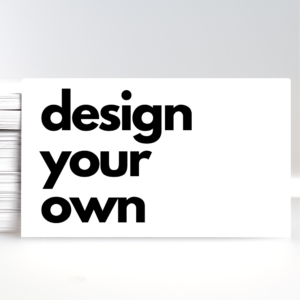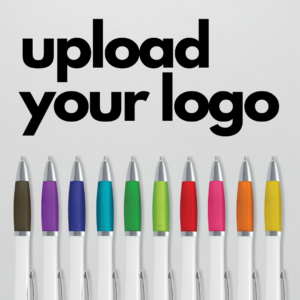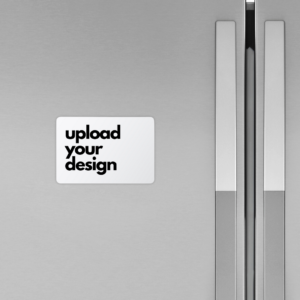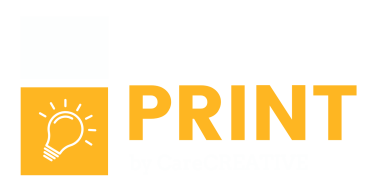Design Tips:
Business Cards
16 JULY 2024
In today’s digital age, people often underestimate the importance of business card design. A business card is more than just a piece of paper with your contact information.
A business card tangibly represents your brand, makes a memorable first impression, and establishes a personal connection. A business card represents your brand, makes a memorable first impression, and connects with people. Whether you’re in aged care, disability (NDIS), childcare, or healthcare, a well-designed business card can make you stand out.
Here are some tips for designing effective business cards, covering design, printing, and online tools to create the perfect card.
1. Understand Your Audience
Before diving into the design process, it is essential to understand your target audience. In the aged care, disability, childcare, and healthcare sectors, your business card should convey professionalism, trustworthiness, and compassion. Tailoring your design to resonate with your audience will enhance your card’s effectiveness.
2. Keep It Simple
Simplicity is key in business card design. Avoid clutter by focusing on essential information such as your name, title, company, contact details, and website. A clean and straightforward design ensures that your card is easy to read and visually appealing.
3. Choose the Right Font
Fonts play a crucial role in the overall aesthetics and readability of your business card. Select fonts that are professional and easy to read, while avoiding overly decorative fonts that can be distracting. Consistency is also important; use the same font family throughout to maintain a cohesive look.

4. Utilise White Space
White space, or negative space, is the area of your design that is left empty. Effective use of white space can make your business card look more organised and highlight the important information. It helps in avoiding a cluttered look and makes the card more visually appealing.
5. Incorporate Your Brand Elements
Your business card should reflect your brand identity. Use your company’s colours, logo, and tagline to create a cohesive look. This helps in reinforcing your brand and making your card instantly recognisable.
6. Include a Call to Action
A subtle call to action can make your business card more effective. Whether it’s encouraging the recipient to visit your website, follow your social media, or contact you for more information, a call to action can guide the recipient on what to do next.
7. Select Quality Paper
The quality of the paper you choose for your business card speaks volumes about your brand. Opt for a sturdy cardstock that feels substantial in the hand. High-quality paper gives the impression that you value quality and pay attention to detail.
8. Utilise Online Business Card Design Tools
Numerous online tools are available for designing business cards. Websites like Canva and CarePRINT offer user-friendly platforms with customisable templates. These tools are great for creating professional-looking business cards without the need for extensive design skills. For those looking for business card design free options, these platforms often offer free templates with various design elements.

9. Experiment with Finishes
Adding special finishes to your business cards can make them stand out. Options like matte, gloss, or UV coating can add a touch of elegance. Additionally, embossing or debossing can add a tactile element that makes your card memorable.
10. Consider Unique Shapes and Sizes
While standard business card sizes are 90 x 55cm, experimenting with different shapes and sizes can make your card stand out. However, it’s important to keep practicality in mind. Unconventional shapes might be memorable, but they should still fit comfortably in a wallet or business card holder.
11. Double-Check Your Information
Nothing undermines the professionalism of a business card more than a typo. Before printing, double-check all the information for accuracy. Ensure that names, titles, phone numbers, and email addresses are spelled correctly.
12. Opt for Double-Sided Cards
Utilising both sides of the card can provide more space for information without making the card look crowded. One side can feature your logo and contact details, while the other can highlight your services or a memorable tagline.
13. Leverage Business Card Printing Services
Professional printing services can elevate the quality of your business cards. They offer various printing options, such as offset or digital printing, that can enhance the overall look and feel of your cards. In Australia, numerous printing companies specialise in high-quality business cards print services that cater to different needs and budgets.
14. Personalise for Aged Care Marketing
For businesses in the aged care sector, consider adding elements that convey warmth and reliability. Use softer colours and clear, easy-to-read fonts. Highlighting your commitment to quality care and compassion can make your business card more appealing to potential clients and partners.

15. Tailor for Disability Marketing
When designing business cards for the disability sector, inclusivity is key. Ensure that your card is accessible by using larger fonts and high-contrast colours. Including information about your services and how they cater to individuals with disabilities can also be beneficial.
16. Creative Marketing Strategies in Australia
Incorporate creative marketing strategies to make your business card a part of a broader marketing campaign. This could include QR codes that link to a promotional video, a special offer, or your company’s social media pages. This not only provides additional information but also encourages engagement.
17. Business Card Design for the Care Sector
The care sector encompasses aged care, disability, childcare, and healthcare services. When designing business cards for this sector, focus on conveying trust and professionalism. Use calming colors, straightforward design, and include a brief tagline that encapsulates your mission or core values.
18. Stay Updated with Business Card Design Trends
Staying current with design trends can help your business card look modern and relevant. Minimalist designs, bold typography, and unique color palettes are popular trends that can make your card stand out. However, ensure that the design aligns with your brand identity.
19. Get Feedback
Before finalising your business card design, seek feedback from colleagues or clients. A fresh perspective can provide valuable insights and help you identify any potential issues you might have overlooked.
20. Print Locally
Printing locally can ensure faster turnaround times and support local businesses. Local printers are also more familiar with the specific needs and preferences of businesses in your area. In Australia, many printing services offer customised solutions to meet your specific business card design and printing needs.
Final Thoughts
Designing a business card is an opportunity to create a lasting impression and communicate your brand effectively. By following these tips, you can create business cards that are not only visually appealing but also functional and aligned with your marketing goals. Whether you are in the aged care, disability, childcare, or healthcare sector, a well-designed business card can be a powerful tool in your marketing arsenal.
At CarePRINT, we encourage everybody to use the tools at their disposal to create beautiful designs for their business cards, but we’re also here for you if you’re looking for a professional touch. If you’d like to work with an expert care-sector designer for your branding and marketing collateral, get in touch with our team by calling 1300 09 09 55, or email info@carecreative.com.au.
Remember, your business card is often the first impression potential clients will have of your brand—make it count!
-
DIY Landscape Business Card
Select options This product has multiple variants. The options may be chosen on the product page -
Vistro Pen – White Barrel
Select options This product has multiple variants. The options may be chosen on the product page -
Fridge Magnets
Select options This product has multiple variants. The options may be chosen on the product page -
Trifold Brochures
Select options This product has multiple variants. The options may be chosen on the product page













